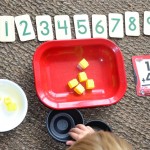Math and Children: Teaching Math to the Visual Learner
 Math is not usually a favorite subject for visual students. It doesn’t mean they’re not good at it. Your child may be struggling and less successful in the classroom because of the way math is being taught. Remember, our visual learners have their own way of seeing things.
Math is not usually a favorite subject for visual students. It doesn’t mean they’re not good at it. Your child may be struggling and less successful in the classroom because of the way math is being taught. Remember, our visual learners have their own way of seeing things.
- Visual kids need to see information.
- They need to know why it matters and how it fits into the grand scheme.
- They are – whole before parts – kind of thinkers.
- They often struggle with showing their work and doing sequential tasks.
These things are all in contrast to the way math is presented, especially in the elementary classroom, which include memorization, timed tests and worksheets. With a few adjustments we can help our visual learners be much more successful.
Use manipulatives – give things to touch, feel and move around while they learn. Let them count 100 cheerios, practice math concepts with real things, use beads to make and recognize patterns.
Make it matter – visual kids need to understand why before they learn how. Let them count money before doing money worksheets, measure ingredients while cooking and divide food or play dough to learn fractions.
Make it visual – add color. Let them draw, write, make colorful note cards to help when they need to memorize. But be sure they have a solid, hands on understanding of the concept before they move on to memorizing.
Make it fun – get away from the worksheets and play some games. Create your own games, roll the dice and practice counting, look on line for math games, play cards and overall keep it light, while you keep them learning.
Use real life situations. Make it conceptual, visual, tactile, kinesthetic. Then compute. What have you found works for your child?
What is your child’s learning style? There are three basic learning styles; visual, tactile, and auditory. Take the test and get immediate results: Is your child a visual learner?
 |
Bette FetterFounder and CEO of Young Rembrandts and Author of Being Visual |










